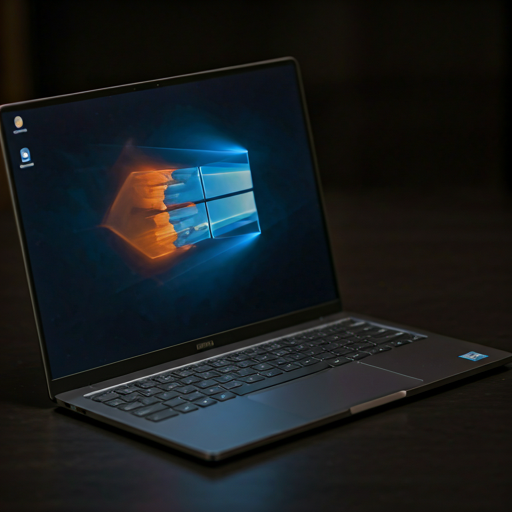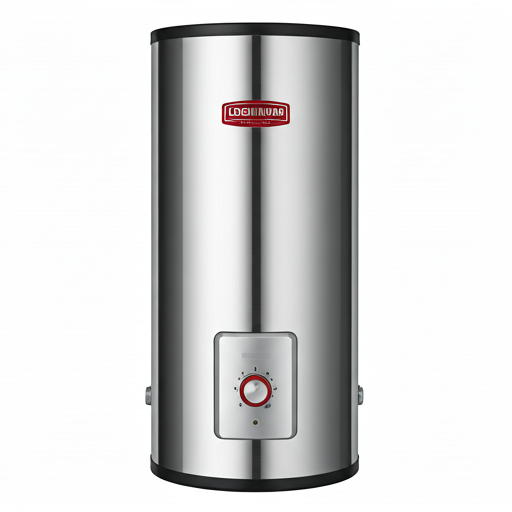Laptop users constantly seek the perfect balance between performance and battery life. This pursuit often leads them to explore different power modes, with “Balanced Mode” being a popular default. But is Balanced Mode genuinely optimal, especially for AMD-powered UTX laptops? “UXTX” typically refers to ultra-thin and light laptops, often prioritizing portability and battery efficiency. This article dives deep into Balanced Mode, its implications for AMD UXTX laptops, and whether it’s the right choice for your needs.
Understanding Laptop Power Modes
Before examining Balanced Mode, let’s briefly recap the typical power modes found on most laptops:
- High Performance: This mode prioritizes maximum processing power. It maximizes CPU and GPU clock speeds, delivering peak performance for demanding tasks like gaming, video editing, and 3D rendering. However, this significantly reduces battery life and generates more heat.
- Power Saver: This mode prioritizes battery longevity by aggressively reducing CPU and GPU clock speeds, dimming the display, and limiting background processes. It’s ideal for extending usage time away from a power source but noticeably impacts performance.
- Balanced: This mode aims to find the sweet spot between performance and battery life. It dynamically adjusts CPU and GPU frequencies based on the current workload. During light tasks, it conserves power; during demanding tasks, it boosts performance.
Balanced Mode on AMD UXTX Laptops:
AMD processors, particularly Risen APUs (Accelerated Processing Units) that integrate CPU and GPU onto a single chip, feature sophisticated power management. These features work in tandem with Windows power modes to optimize performance and efficiency. This is especially relevant for UXTX laptops, which often leverage the efficiency of AMD integrated graphics to achieve thin profiles and extended battery life.
On an AMD UXTX laptop, Balanced Mode typically involves:
- Dynamic Frequency Scaling (CPU & GPU): The CPU and integrated GPU clock speeds dynamically adjust based on the current workload. This conserves power during idle or light tasks and boosts performance when needed. This is crucial for UXTX laptops balancing portability and usability.
- Power Gating: Unused portions of the processor are selectively powered down to minimize power consumption, a key factor in extending battery life.
- Optimized Fan Control: Fan speeds are adjusted based on temperature, balancing effective cooling with minimizing noise levels, crucial in thin and light UXTX laptops where thermal management can be challenging.
- AMD-Specific Technologies: AMD’s technologies like Precision Boost (dynamically boosting clock speeds based on thermal headroom and workload) and Smart Shift (intelligently shifting power between CPU and GPU) further enhance Balanced Mode’s effectiveness.
Advantages of Balanced Mode for AMD UXTX Laptops
- Versatility for Everyday Use: Balanced Mode is perfectly suited for everyday computing. It provides sufficient performance for web browsing, email, document editing, streaming, and other common activities while maximizing battery life, valuable for UXTX laptops designed for on-the-go use.
- Reduced Heat and Noise: Dynamically adjusting clock speeds and fan activity keeps the laptop running cooler and quieter than High Performance mode, contributing to a more comfortable user experience, especially in thin and light UXTX form factors.
- Improved Battery Life: A primary advantage, Balanced Mode offers significantly longer battery life than constantly running in High Performance mode, crucial for UXTX laptops emphasizing portability and battery life.
- Optimal for Integrated Graphics: For laptops relying on integrated graphics (common in UXTX designs), Balanced Mode often provides a good balance between graphical performance and power consumption.
Potential Drawbacks of Balanced Mode
- Slight Performance Reduction: For extremely demanding tasks like high-end gaming at maximum settings, professional video editing, or complex 3D rendering, a slight performance decrease compared to High Performance mode might be observed.
- Potential for Minor Stuttering: In certain situations, the dynamic frequency scaling might not react instantaneously to sudden activity bursts, potentially causing brief stuttering or lag. This is less common with modern AMD processors and drivers.
When to Use Balanced Mode on Your AMD UXTX Laptop
- General Everyday Computing: Balanced Mode is ideal for most everyday tasks.
- When Battery Life is a Priority: If away from a power outlet and needing to conserve battery, Balanced Mode is the recommended choice.
- Light to Medium Gaming and Content Consumption: Many less demanding games and streaming services run smoothly in Balanced Mode, providing a good balance between performance and battery life.
When to Consider Other Modes
- High Performance Mode: Use this mode when requiring maximum performance for demanding tasks fully utilizing the CPU and/or GPU.
- Power Saver Mode: Use this mode when maximizing battery life is the absolute top priority and accepting a significant performance reduction is acceptable.
Customizing Power Plans:
Windows provides a powerful feature called “Power Options” that allows users to customize how their computer manages power consumption. This customization is achieved through “Power Plans,” which are sets of settings that govern various aspects of system behaviour, impacting both performance and battery life. While Windows offers default power plans like Balanced, Power Saver, and High Performance, the real power lies in the ability to modify these plans or create entirely new ones. This level of control is particularly beneficial for users of AMD UXTX laptops who want to fine-tune their system for optimal performance in specific situations or maximize battery life when needed.
Accessing Power Options and Customizing Plans
Here’s how you can access Power Options and begin customizing your power plans:
- Search for Power Options: The easiest way is to type “Power Options” in the Windows search bar and select the corresponding control panel applet.
- Choose or Change a Plan: You’ll see a list of available power plans. The currently active plan will be highlighted. To modify an existing plan (like Balanced), click “Change plan settings” next to it.
- Change Advanced Power Settings: In the “Edit Plan Settings” window, you’ll see basic settings like display brightness and sleep timers. To gain more precise control, select “Change advanced power settings.”
Key Settings for Fine-Tuning Performance and Battery Life within Balanced Mode (and Other Modes)
The “Advanced settings” window provides access to a wide range of customizable options. Here are some of the most important settings for balancing performance and battery life:
Processor power management:
This section offers crucial controls over CPU behaviour:
- Minimum processor state: This setting determines the minimum percentage of the processor’s maximum frequency that it will use. Lowering this value allows the CPU to idle at lower frequencies, saving power. In Balanced mode, this is often set to a lower value (e.g., 5% or 10%) to maximize power savings during idle periods.
- Maximum processor state: This setting determines the maximum percentage of the processor’s maximum frequency that it will use. Setting this to 100% allows the CPU to reach its full potential when needed. In Balanced mode, this is typically set to 100% to ensure good performance under load. However, you could lower this value slightly (e.g., to 90% or 95%) to limit maximum performance and further reduce heat and power consumption, even in demanding tasks. This could be useful for users who prioritize quiet operation over absolute peak performance.
- System cooling policy: This parameter controls how the system responds to heat. “Active” means the system will aggressively increase fan speeds to cool down the processor, while “Passive” means the system will reduce processor performance to lower temperatures. In Balanced mode, “Active” is usually preferred to maintain good performance, but “Passive” could be chosen if minimizing fan noise is a higher priority.
Display:
These settings control display brightness, which significantly impacts battery life:
- Display brightness: Lowering the brightness, especially when on battery power, can substantially extend battery life. You can set different brightness levels for when the laptop is plugged in and when it’s on battery.
- Turn off display after: This setting determines how long the display stays on before turning off due to inactivity. Shorter timeouts save power.
Hard disk: This setting controls when the hard disk (if your laptop has one) spins down due to inactivity, saving power.
Wireless Adapter Settings: This section allows you to control the power saving mode of your Wi-Fi adapter. Setting it to “Maximum Power Saving” can extend battery life but may slightly reduce Wi-Fi performance.
Battery: This section offers settings related to battery warnings and critical battery actions.
Examples of Customization within Balanced Mode
- Prioritizing Battery Life within Balanced Mode: If you’re using your AMD UXTX laptop primarily for tasks like web browsing and document editing and need to maximize battery life, you could:
- Lower the “Maximum processor state” slightly (e.g., to 90%).
- Set the “System cooling policy” to “Passive.”
- Lower the display brightness, especially for battery mode.
- Set shorter timeouts for turning off the display and hard disk.
- Prioritizing Performance within Balanced Mode: If you occasionally need a bit more performance for light gaming or more demanding applications while still maintaining decent battery life, you could:
- Make sure the “Maximum processor state” is set to 100 percent.
- Use the “Active” cooling policy.
- Adjust display brightness to a comfortable level.
Creating Custom Power Plans
Beyond modifying existing plans, you can create entirely new custom power plans. This allows you to create specific profiles for different use cases. For example, you could create a “Travel” plan that maximizes battery life or a “Gaming” plan that prioritizes performance.
Conclusion:
Balanced Mode is generally an excellent choice for AMD UXTX laptops. It offers a compelling compromise between performance and battery life, keeping your laptop running efficiently and quietly. While High Performance mode is necessary for specific demanding tasks, Balanced Mode provides a versatile and efficient way to use your laptop for most everyday activities, especially in the context of thin and light UXTX designs where portability and battery life are paramount. Experiment with different power modes and customize them to discover the settings best aligning with your individual usage patterns.


